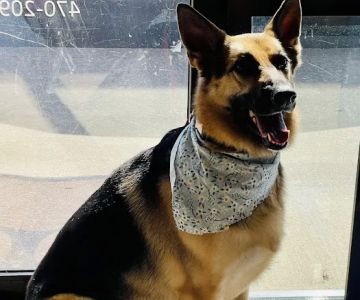- 1. Why Do Dogs Hate Baths?
- 2. Getting Your Dog Comfortable with Water
- 3. Creating a Positive Bathing Experience
- 4. Training Your Dog for Grooming
- 5. Common Bathing and Grooming Mistakes to Avoid
1. Why Do Dogs Hate Baths?
When I first adopted my dog, I quickly realized that bath time was a stressful event for both of us. She would tremble, try to escape, and make the whole process feel like an ordeal. After talking to other dog owners and trainers, I discovered that many dogs feel the same way about baths. Understanding why dogs dislike baths is the first step in making bath time a positive experience for both you and your pet.
For many dogs, the fear of baths stems from a combination of factors. Water itself can be intimidating to some dogs, especially if they haven’t been properly introduced to it. The sound of running water, the sensation of being submerged, or the feeling of being restrained during the process can all cause anxiety. Additionally, some dogs may have had negative experiences in the past, such as getting water in their ears or eyes, which can make them fearful of future bath sessions.
2. Getting Your Dog Comfortable with Water
Before I could even think about making my dog enjoy her bath, I knew I had to help her get comfortable with water. Introducing your dog to water gradually is key to easing their fear. Here are some tips that worked for me when I was getting my dog accustomed to water:
2.1. Start with a Calm Environment
It’s essential to create a calm, quiet environment when introducing your dog to water. I found that bath time went much smoother when there weren’t loud noises or distractions. I turned off the TV and played calming music, which helped both of us relax. I also made sure my dog was calm and comfortable before starting the bath, giving her time to adjust to the idea of getting wet.
2.2. Use Warm Water
One of the things I quickly learned is that temperature matters. Cold water can be shocking and uncomfortable for dogs, while hot water can be too intense. I always use warm water when bathing my dog, as it’s gentler and more inviting. I also tested the water with my hand before introducing it to her, making sure it was at a temperature that felt comfortable for both of us.
2.3. Gradual Introduction
When I first started introducing my dog to the idea of water, I didn’t go straight to the bathtub. Instead, I used a shallow bowl or a kiddie pool in the yard, allowing her to explore the water at her own pace. I’d place her paws in the water, praise her when she stayed calm, and gradually increase the amount of water around her. This gradual approach helped her feel more in control and less stressed about the experience.
3. Creating a Positive Bathing Experience
Now that my dog was comfortable with water, it was time to make bath time a positive experience. After a few successful practice runs, I began to establish a routine and made sure to include some fun elements to make the experience enjoyable for her. Here’s how I created a positive bath time experience:
3.1. Use Treats and Positive Reinforcement
Positive reinforcement played a huge role in helping my dog enjoy bath time. Every time she stayed calm during the bath, I rewarded her with a treat and lots of praise. I made sure to use treats that she really loved, so she began associating bath time with something enjoyable. Over time, she started looking forward to bath time because she knew that good things followed.
3.2. Take It Slow
Another important thing I learned is to take my time. Rushing through the bath can make both you and your dog feel stressed. I made sure to keep the bathing process slow and steady, giving her breaks if she seemed overwhelmed. I also avoided getting soap or water in her face or ears, which helped her feel more relaxed.
3.3. Keep the Water Flow Gentle
When I first started bathing my dog, I made the mistake of using a strong stream of water, which only added to her anxiety. Now, I use a gentle shower head or a cup to pour water slowly over her body. I also avoid spraying water directly in her face, as this can be frightening for many dogs. This gentle approach helped her feel more at ease, and she started associating the bath with a calming experience.
4. Training Your Dog for Grooming
Bath time is just one part of grooming, and I quickly realized that my dog needed to be comfortable with other grooming tasks, such as brushing, nail trimming, and ear cleaning. Training your dog to enjoy grooming is just as important as getting them used to baths, and it can make the entire grooming process much easier. Here’s how I started training my dog for grooming:
4.1. Introduce Grooming Tools Gradually
Just like with water, I introduced grooming tools to my dog gradually. I started by allowing her to sniff and explore the brush or nail clippers without actually using them. I’d give her treats and praise whenever she showed interest in the tools, making sure she didn’t feel intimidated by them. Over time, I used the tools gently on her, rewarding her for staying calm during each step of the process.
4.2. Brush Regularly
Brushing became a regular part of my dog’s routine, even when she wasn’t due for a bath. Regular brushing not only helps keep her coat healthy but also allows her to get used to the feeling of the brush. I found that short, frequent brushing sessions were more effective than longer ones, and I always made sure to reward her afterward to reinforce the positive behavior.
4.3. Keep Grooming Sessions Short and Positive
Like with baths, keeping grooming sessions short and positive is key. I began by doing small tasks, like trimming one nail at a time or brushing for just a few minutes. As she became more comfortable, I increased the length of each session. Always ending on a positive note—whether it’s with praise, treats, or a favorite toy—helped her enjoy the process and look forward to future grooming sessions.
5. Common Bathing and Grooming Mistakes to Avoid
While training your dog to enjoy baths and grooming is important, there are a few common mistakes that can make the process more stressful for both of you. I’ve learned a lot through trial and error, and here are some mistakes I recommend avoiding:
5.1. Rushing the Process
Bath time and grooming should be enjoyable experiences for both you and your dog, so don’t rush through them. I found that when I took my time and didn’t rush my dog, she was much more cooperative and less stressed. Allowing your dog to gradually get used to the routine will make future sessions much smoother.
5.2. Using Harsh Products
Another mistake I made early on was using harsh shampoos or grooming products that irritated my dog’s skin. It’s important to use products that are specifically designed for pets to avoid causing any discomfort. I now use gentle, pet-friendly shampoos and conditioners that leave her coat soft and healthy without causing irritation.
5.3. Ignoring Your Dog’s Cues
Every dog is different, and it’s important to pay attention to your dog’s cues during bath and grooming time. If your dog seems stressed or uncomfortable, take a break and give them some time to relax. I’ve learned that patience is key when training my dog to enjoy these activities.
Training your dog to enjoy baths and grooming may take some time, but the effort is well worth it. With patience, positive reinforcement, and a calm approach, your dog can learn to associate these activities with relaxation and enjoyment. If you need professional grooming assistance or advice, be sure to visit Hidden Brook Veterinary for expert care and services tailored to your pet’s needs.











